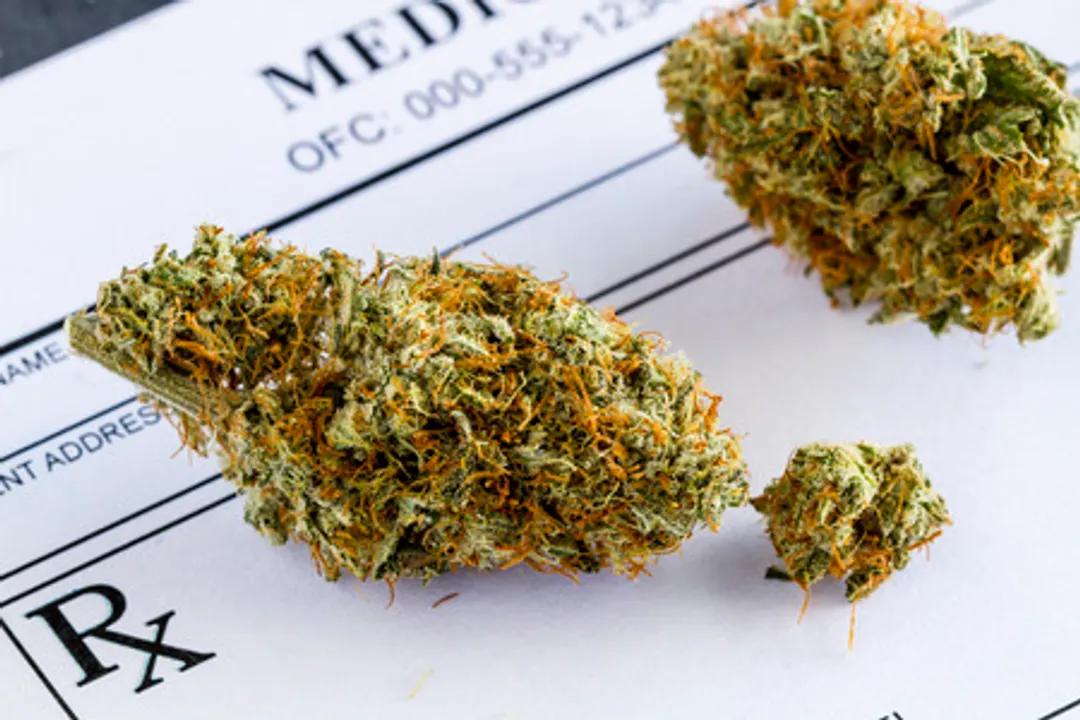The Medical Marijuana Industry's Potency Problem

Teri Virbickis/123RF.com
The safe use of marijuana for medical purposes is one of the areas in which mainstream medicine has let its patients down. Primary care providers should take more of an active role advocating for their patients in regards to marijuana. Used safely, marijuana and its separate components, can help waylay a significant number of symptoms and decrease the need for narcotic prescriptions.
After using marijuana products for over 40 years to curb my resistant chronic pain, I spent 1000 hours reading and studying research papers on marijuana. Of the approximately 13,000 papers available, I reviewed 1500. This research helped me define medical marijuana. Based on this investigation, I wrote a handbook (Marijuana: It’s an Herb with an Asterisk) on how to use marijuana, the complete leaf and separate cannabinoids, safely. As part of my research, I checked with multiple dispensaries and concluded that what is being presented as medical marijuana to the consumer is not really medical marijuana as defined by the research.
Medical marijuana should be defined by its research and the parameters of that research. Almost all of the papers on marijuana used as a treatment for medical purposes contained the cannabinoid THC with a percentage less than 10%. THC is noted for its mind-altering effects, but it has many other effects beneficial to maintaining health. One of the other cannabinoids in marijuana, CBD, also has a concurrent percentage that is recommended if THC is used for medical use. An exact percentage of the best THC to CBD ratio has not been clarified. Again, THC and CBD are cannabinoids (chemical compounds) contained in marijuana. These two cannabinoids are the most active chemicals in treating medical conditions. Concurrent use of CBD with THC shows CBD providing protection against the negative effects of THC. Note: CBD should be used with THC if it is in a medical context.
When I started writing my book, the major discrepancies between science-backed medical marijuana and currently dispensed medical marijuana became more and more obvious. Let’s start with the difference between medical marijuana (research based) and currently dispensed marijuana in relation to the THC percentage. Close to 100% of the research articles that focused on treatments using medical marijuana used less than 10% THC. Looking at multiple dispensaries from states that only allow medical marijuana, the majority of offerings were a THC over 20%. The research is also clear on another topic. If you are using marijuana medically, it is recommended that it contain some percentage of CBD (cannabidiol). The CBD is present to protect against the negative effects of THC and also has many of its own medical benefits. Many dispensary medical marijuana offerings have no CBD. Incorrect percentages and ratio of THC and CBD can significantly diminish their positive health benefits and unleash many negative effects. Problem: The majority of the marijuana carried by dispensaries has too high a THC content (over 20%) to be medical and a significant amount of their marijuana does not contain the recommended CBD.
Why does it make any difference if the THC percentage is too high? There is a question if it is medically beneficial (defined by science and research), and it maybe actively hurting people. THC percentages in the 1960’s and 1970’s were in the 2-4% range. The THC percentages of 10 medical dispensaries in 10 different states had 95% of their products in the range of 18-25%. Medical research with marijuana is done with less than 10% THC and mostly with at least 2% CBD. The increase in the number of motor vehicle fatalities related to marijuana has increased by almost 4 times as THC levels increased. Fatalities from marijuana were stable at 3% of the total motor vehicle drug related fatalities for decades. It is now at almost 11%. The number of ER visits related to the side effects of marijuana (most are because of a psychosis) has sky rocketed. Most are related to the high THC content with no CBD. There is direct evidence that THC over 20% causes significant changes to the brain in the area of the corpus callosum, the area that lets the two sides of the brain communicate. Memory impairment and coordination are diminished related to the percentage of THC. Problem: Increase in motor vehicle fatalities related to high THC % causing decreased motor skills and increased ER visits related to high THC psychosis.
There is a near total lack of connection between medical research on marijuana and many of the current offerings of so called medical marijuana. You obtain a card to enable buying marijuana at a legal dispensary. The card needs to have a physician write a recommendation for marijuana use. The physician does not need to have any knowledge or training in the use of marijuana for therapeutics. With this card, you can buy what is represented as medical marijuana from someone also not required to have any training. Along with this probably not being medical marijuana come the increased risks for many unwarranted side effects. Problem: Medical providers just write a recommendation for medical marijuana use with little training. The dispensary personnel are not required to have any working knowledge about medical marijuana.
The high level of THC, I believe, is consumer and profit driven. When we are talking about medical marijuana, this is not acceptable. Medical patients using marijuana for health reasons should not be exposed to unnecessary risks related to too high THC levels and a lack of CBD. Medical marijuana is not about getting high, and most medical patients are unaware of the increased risks. Also, a number of consumers are masquerading as medical patients and are actually recreational users. This has been a factor in the push for higher THC percentages. Problem: Consumer driven high THC %, little patient knowledge base, and lots of cards obtained by non-medical users are unacceptable.
Marijuana has significant health benefits and should be available for people with chronic medical conditions to help manage their conditions. As a physician, I feel our medical societies have failed us in not being more active in insuring that physicians have a knowledge base before recommending the use of marijuana. The patients also need to be knowledgeable about marijuana to protect themselves. Contrary to the usual opinion, there has been a large volume of research done on marijuana. Research has, in certain cases, had its hands tied due to the legal climate surrounding marijuana, but worldwide research gives us a path for safe use. There are many questions that still need to be answered, but we can proceed with a safe standard. Why have we decided not to take this path and not place some regulations and recommendations for medical use? Problem: No regulations according to current research.
The FDA has done little to pursue the current knowledge base about marijuana and recently decided to leave it in the class of the most dangerous illegal drugs with room for some increase in research possibilities. Close to 25 states have laws permitting medical marijuana, but there is little direction for its use. Shame on the FDA for being so political and nonscientific.
Be knowledgeable! The safe use of marijuana is possible, but it can also easily harm you.
References
The Legalization of Marijuana in Colorado: The Impact Sept 2015
Toennes SW Comparison of Cannabinoid Pharmacokinetic Properties on Occasional and Heavy Users Smoking a Marijuana or Placebo joint. Journal of Analytic Toxicology Sept 2008
Sharma P Chemistry, Metabolism, and Toxicology of Cannabis: Clinical Implications. Iran J Psychiatry Fall 2012
Vermuri VK Medicinal chemistry of cannabinoids. Clinical Pharmacology and Therapeutics Apr 2015
Forensic Science and Medicine: Marijuana and the Cannabinoids Chapter 2e Editor Elsohly MA
Filbey FM Long term effects of Marijuana on the Brain Pro. Natl. Aced. Sciences USA Nov 2014
Villares J Chronic use of marijuana decreases cannabinoid receptor binding and mRNA expression in the human brain Neuroscience Mar 2003
Rigguci S Effect of high-potency cannabis on corpus callosum microstructure. Psychological medicine Nov 2015
Forti MD Daily use, especially of high-potency cannabis, drives the earlier onset of psychosis on cannabis users. Schizophrenia Bulletin 6 Dec 2013
Related Posts
